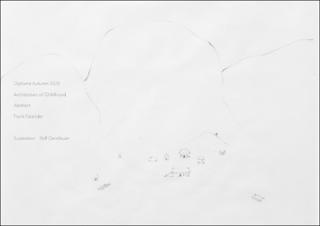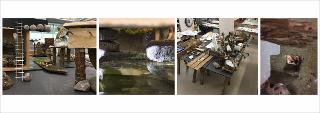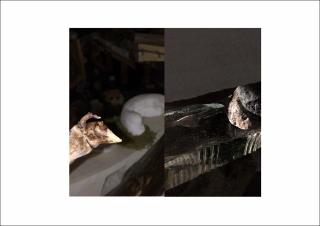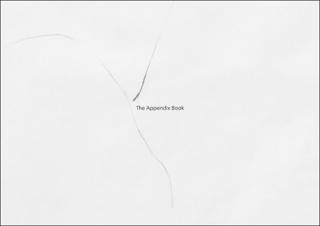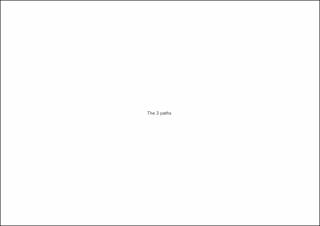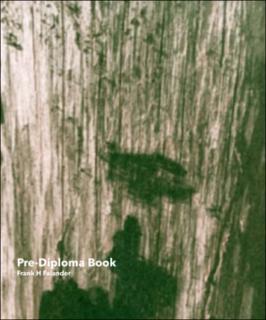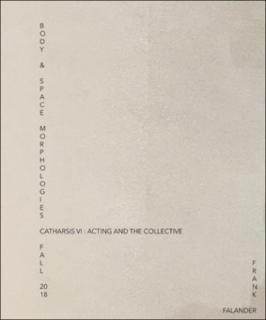| dc.description | Dear reader, this is my diploma work.
Places of childhood that are dear to me. Places that I still keep in my memory and that still today architecturally have a sound impact on me and that I consult in my imagination over and over again when I am engaging with architecture. I wanted to revisit the places and find ways to recreate them. These places are full of memories
and objects that connect to me, and also to people that are dear to me. In my diploma I attempt to find ways to collect objects that are charged documents, meaning they are meaningful to me, they are connected to places and to people. And by bringing them to Oslo I wanted to see if I can make them into architecture that responds
with the very memory of those architectures, of those hidden places of childhood. In this book I show both the nine architectures of childhood that I
have revisited and how I recreated them. In the appendix I show the materials and objects that those important objects are connected to.
"Direct your eye-sight inward, and you’ll find a thousand regions in your mind yet undiscover’d. Travell them, and be expert in home Cosmographie
William Habington (1605-1664)"
I have always been intrigued by small objects. Since I was a little child I’ve been collecting these strange little things that suddenly
just ended up in my pocket and were brought home to my room, to my hiding places or into my little cabin in the trees in the forest. I remember
that I really loved to move them around and to place them beside other things. I made a home for my most precious objects
in a blue assortment frame, that hung over my bed. I watched over them every night. It was my objects and me against the world.
These memories around those important objects were dear to me as a child. That’s why I thought it was interesting to discover
what they could do with me as an adult and how I could engage with them. To go on different paths to find out more about how
my body acts with the circumstances in life. How that helps me to create a collection by collecting and by the finding of an essence
of a memory and space. I went back to my nine most important places from childhood. Where I could be able to remember these
memories more fully and also collect objects. Sometimes I brought with me new different objects that could help me in the process.
And then I brought the collected things back to my table in Oslo where I built them together in different groups to create with them.
I tried to put me as a child and me as an adult together in these groups. It’s basically about claiming something or claiming a place
with objects. During this process different scales started to accord on my table. It started to be a playful table. The things I collected,
the things I found, the things I made and things that are important to me as an adult and were important to me as a child were now
playing together. The ongoing process with the different objects gave me a more architectural awareness of what was happening
with the groups and what the objects’ relations were. By finding back to the haptic perception in my objects, by them performing
something new on the table, I think it started to be possible for the viewers to sense and explore how charged the objects are. How
the groups together can form this childhood architecture that is important to me. I believe that the different processes in this story
are important for the perception of the rooms that have been created by the objects. By moving something that is so charged for
me from one of my important childhood places, may be strange and naive, but by doing so I can show others the story. How I
carefully developed this with the objects so that they can create something with something to improve the feeling of my haptic
story and my childhood architecture.
I am looking for the trust formative fact in the objects, the narrative that they are based on. To define a content so that the story can continue. Many of the exercises that I have done are pointing in that way. The groups are like a village in a bigger village, or a house in a bigger house. I felt they needed a name that was reflecting my previous objects. So, the names could have a bigger meaning and could draw an even thicker line to me and my past. By doing that, giving them new names, I see them now as larger pieces in my mind, created with my mnemonic tool. At one point I tried to bring the groups away from the table to new locations at Grunerløkka. The groups play differently when you put them into a new context. It is not something I felt was the core of the project, but you can see the work in the appendix. This diploma is a way of seeing architecture from a different angle. To have active and charged objects that are important to me. To work with something that has a meaning for me, a history in
themselves and within me. I believe this is an ongoing story that will continue for me after this diploma and probably for the rest of my life. This type of process is so strongly intact with me and my body, and how this leads me to something architectural is important for me and my path into this profession. The work has also been about being a bit naive and being able to work in a playful way. Like children do. So that the rebuilt memories were able to rebuild architecture. This felt like something that could be a dwelling and is a kind of architecture that reflects my childhood. A safe place and maybe a place for my future child? A place with joy, love and hugs.
An Architecture of Childhood. | en_US |
